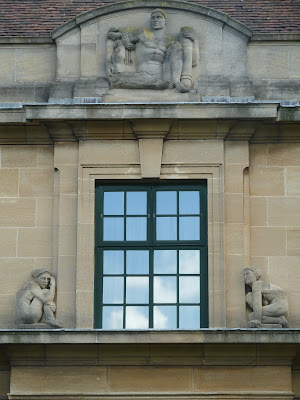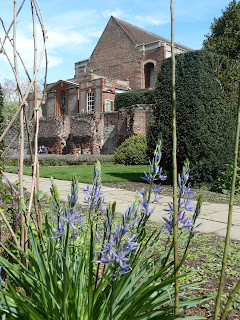Eltham is a bit of a trek, but well worth it. Originally owned by a bishop (who else had the money to lavish in the early medieval period than men of the cloth?), he gave it to the Crown (let's face it, a bit of sucking up to the King was generally a good career move - Thomas a Becket take note). Richard IV built the Great Hall. Henry VIII spent much of his youth here. But it fell into disuse under the Stuarts and was downgraded to agricultural use by the 18th century. In a largely ruinous state the wealthy Courtaulds took it over as a country residence near the City in the 1930s. They left us with what is surely the finest art deco interior of any house in the Country, and the gardens are beautiful too. And architecturally the house is really clever, making great use of the medieval hall, which has a fabulous hammer beam roof. And its sentimental medieval style would have made a wonderful spot for entertaining, as it was once used in the 14th century and again in the 30s and 40s. And I think you can still hire it all out for receptions. Big ones.
So let's take a tour.
The 1930s house is actually wedge-shaped, but with the medieval hall tacked on to one side of the wedge.
The entrance is off a turning circle occupying the space between the two sides of the wedge in front of the hall.
But let's leave the house itself for a moment and carry on to the gardens. On the right side is a nice Renaissance well with a bright red camelia next to it, along with the ruined foundations of the medieval palace.
As you turn past the old hall on the left you pass the ....squash courts. The Courtaulds liked squash, so built an art deco squash court which they tacked on the far end of the great hall. And they included a suitably muscular art deco St George in a niche at the end.
Left again and you come across a great lawn in front of the long side of the house, ie the Great Hall with one side of the wedge.
You can then walk down from the lawn to the walled garden which is in the old moat, the walls of which form the wall for the herbaceous borders.
If one turns right round this (thankfully) dry part of the moat one comes across a further very attractive formal garden with pools (the first of which sadly lacks the statue the Coutaulds inserted) and a rose garden. Too early for the roses, but then one finds the cherry trees in full bloom at the end, where the filled part of the moat starts and winds round the house.
Going round again one comes across the medieval bridge across the moat. They don't build bridges like this any more (not least as they don't take juggernauts very well).
Lots more views on the grassy area to the front, looking particularly fine this time of year due to the magnolias and above all flowering cherry trees.
Then one comes around the rear again, with views across the spring bulbs to the Great Hall.
Then one can cross the old wooden footbridge back to the house over the walled garden.
Ok, so enough of the grounds. The house. As I say, its a remarkable art deco design. Especially the Swedish designed domed entrance hall which is the centre point of the wedge, all the other rooms feeding off it, and undoubtedly the star point ofthe design. It has, as they say, the wow factor.
These will give an idea of the opulence, the offices, boudoir, bedrooms etc.
But this only gives a hint of it. Before the war was a different world for the super rich, a world just entering modernity. Telephones just starting, recessed lighting, but still servants galore. And world travel. And a love of exotic animals. The house had a two storey cage for their pet ring-tailed lemur. And the Coutaulds sponsored expeditions. One of which was delayed as one of the team was bitten by the said ring-tailed lemur, severing an artery. Which was made worse because the poor guy was allergic to the iodine used on the wound!
So all in all, well worth a day out to south London.
And to finish with a flourish, something floral. Some very attractive flowers to photograph.


























































































































No comments:
Post a Comment